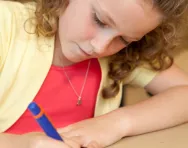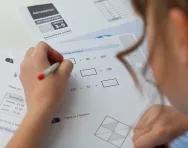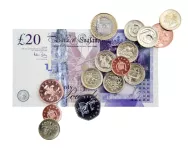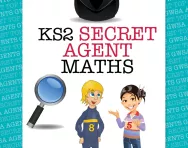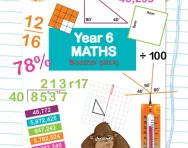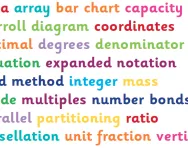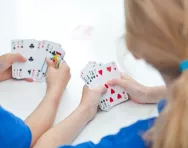Important update from TheSchoolRun
For the past 13 years, TheSchoolRun has been run by a small team of mums working from home, dedicated to providing quality educational resources to primary school parents. Unfortunately, rising supplier costs and falling revenue have made it impossible for us to continue operating, and we’ve had to make the difficult decision to close. The good news: We’ve arranged for another educational provider to take over many of our resources. These will be hosted on a new portal, where the content will be updated and expanded to support your child’s learning.
What this means for subscribers:
- Your subscription is still active, and for now, you can keep using the website as normal — just log in with your usual details to access all our articles and resources*.
- In a few months, all resources will move to the new portal. You’ll continue to have access there until your subscription ends. We’ll send you full details nearer the time.
- As a thank you for your support, we’ll also be sending you 16 primary school eBooks (worth £108.84) to download and keep.
A few changes to be aware of:
- The Learning Journey weekly email has ended, but your child’s plan will still be updated on your dashboard each Monday. Just log in to see the recommended worksheets.
- The 11+ weekly emails have now ended. We sent you all the remaining emails in the series at the end of March — please check your inbox (and spam folder) if you haven’t seen them. You can also follow the full programme here: 11+ Learning Journey.
If you have any questions, please contact us at [email protected]. Thank you for being part of our journey it’s been a privilege to support your family’s learning.
*If you need to reset your password, it will still work as usual. Please check your spam folder if the reset email doesn’t appear in your inbox.
SATs revision: your KS2 SATs maths helper
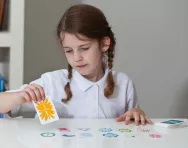
KS2 maths SATs: understanding the test
At the end of Year 6 all children sit a KS2 maths SATs exam, which is made up of three papers:
- Paper 1: arithmetic (30 minutes)
- Paper 2: reasoning (40 minutes)
- Paper 3: reasoning (40 minutes)
The arithmetic paper consists of around 36 questions that are all number sentences involving the four operations (addition, subtraction, multiplication and division). Numbers used may be decimals with up to two places, or whole numbers with up to five digits. Children will be required to calculate with percentages and decimals.
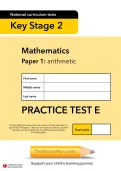
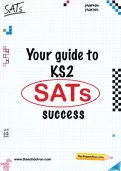
Prepare your child for KS2 SATs today
- Your guide to SATs
- KS2 SATs revision course
- 10 SATs practice papers in English & maths
The reasoning papers each consist of around 20 questions, each of which present a problem or puzzle that requires your child to apply their mathematical knowledge in a variety of contexts.
Using practice papers
In 2016, the format and content of SATs was completely overhauled. The 2016 official KS2 Maths SATs papers, 2017 papers, 2018 papers, 2019 papers and 2022 papers are now available to download for home study.
It may be a good idea to ask your child to do these papers unaided – maybe doing one paper every other day over the course of a week. You can then mark their papers using the mark scheme, which you can also download, and see where their strong and weak areas are.
You can also download past Y6 SATs papers (these will be in the pre-2016 SATs format, but are still useful for practice) and work through them with your child to help familiarise them with exam technique. Looking through the kinds of questions they will be asked will help you identify any areas of difficulty, as well as boosting your child's confidence by highlighting all the skills they've learned in Key Stage 2.
Going through the arithmetic paper with your child is an excellent way to find out if they are secure with their methods for addition, subtraction, multiplication and division, and if not, work to address their difficulties. Some of the questions in the arithmetic paper are difficult, so don't force them on your child until you think they have all the basics. For example, they need to know how to find 10 per cent of an amount before they can possibly find 45 per cent.
When looking at your child's wrong answers in the reasoning papers, see if you can work out what skills they are lacking. For example, if they have misunderstood a two-step problem that requires multiplication and subtraction, where did they go wrong? If they got the multiplication wrong, they may need to brush up on their times tables. If they weren't sure which operations to use, they may need to practise a range of one-step problems before moving onto two-step problems. Think carefully about the skill they need to practise and then use the relevant TheSchoolRun worksheets to help them; you may want to use Year 4 or Year 5 worksheets, if appropriate.
Little and often is the best way to approach SATs revision; maybe you could work on two or three questions a day with your child so that they are not overloaded (read our parents' guide to using a KS2 SATs maths past paper for tips). Don't keep labouring over something they are finding too difficult; they will just get demoralised and you will put them off altogether.
Here are the main maths objectives children will need to know when sitting the KS2 SATs. Each one is followed by a link to a TheSchoolRun worksheet that will help your child practise the skill.
Confused by the maths terminology? Our primary-school maths glossary explains the vocabulary in plain English.
Number and place value
| Numeracy objective | Worksheet |
| Read, write, order and compare numbers up to 10,000,000 and determine the value of each digit | Read, write and order 7-digit numbers |
| Find the difference between a positive and negative integer | Differences between positive and negative integers |
| Round any number to a required degree of accuracy | Rounding decimals to one decimal place or the nearest whole number Rounding to two decimal places |
Addition, subtraction, multiplication and division
| Numeracy objective | Worksheet |
| Multiply numbers up to four digits by a two-digit number using long multiplication | Multiplying using long multiplication |
| Divide numbers of up to four digits by a two-digit number using long division | Dividing numbers with the long division method |
| Divide numbers of up to four digits using short division | The short division method |
| Identify common factors, common multiples and prime numbers | Common factors, common multiples and prime numbers puzzles |
Fractions, decimals and percentages
| Numeracy objective | Worksheet |
| Use common factors to simplify fractions | Simplifying or reducing fractions |
| Compare and order fractions | Compare and order fractions |
| Add and subtract fractions with different denominators and mixed numbers | Fractions: addition and subtraction |
| Multiply simple pairs of proper fractions | Multiplying pairs of fractions |
| Multiply and divide numbers by 10, 100, and 1000 giving answers up to three decimal places | Multiplying and dividing numbers by 10, 100 and 1000 speed challenge |
| Multiply decimal numbers by whole numbers | Multiplying decimals using the grid method |
| Work out equivalence between simple fractions, decimals and percentages | Equivalent fractions, decimals and percentages memory game |
Ratio and proportion
| Numeracy objective | Worksheet |
| Solve problems involving ratio and proportion | Ratio problem-solving Proportion puzzle Solving problems: ratio and proportion |
| Find percentages of amounts | Percentage problem |
| Solve problems involving similar shapes with a scale factor | Shapes and scale factors |
Algebra
| Numeracy objective | Worksheet |
| Work out simple equations | Introduction to algebra |
| Generate and describe linear number sequences | Linear number sequences explained |
| Find pairs of numbers that satisfy an equation with two unknowns | What could the two numbers be? |
Measurement
| Numeracy objective | Worksheet |
| Solve problems involving the calculation and conversion of units of measure, involving answers with up to three decimal places | Solving length problems Solving weight problems Solving capacity problems |
| Solve problems involving conversion of time | Converting measures time puzzles |
| Convert between miles and kilometres | Miles and kilometres conversions |
| Calculate the area of parallelograms and triangles | Calculating the area of parallelograms and triangles |
| Work out the volume of cubes and cuboids | Volume of cubes and cuboids |
Geometry: properties of shapes
| Numeracy objective | Worksheet |
| Draw 2D shapes using given dimensions and angles | Follow instructions to draw shapes |
| Recognise, describe and build simple 3D shapes, including making nets | Draw your own 3D shape net |
| Find unknown angles in triangles, quadrilaterals and regular polygons | Angles in a triangle Finding unknown angles in quadrilaterals |
| Illustrate and name parts of a circle: radius, diameter and circumference | Parts of a circle |
| Calculate unknown angles that are around a point and on a straight line | Angles around a point |
Geometry: position and direction
| Numeracy objective | Worksheet |
| Describe positions on all four quadrants of the coordinates grid | Co-ordinates and quadrants |
| Draw simple shapes on the coordinate plain, then translate and reflect them | Translating and reflecting shapes on all four quadrants |
Statistics
| Numeracy objective | Worksheet |
| Interpret and construct pie charts and line graphs and use these to solve problems | Answering questions on a pie chart Answering questions on a line graph Displaying information as a pie chart Constructing a line graph |
| Calculate and interpret the mean as an average | Calculating the mean average |
KS2 English SATs revision
For preparation and revision tips for Year 6 English SATs see our KS2 English SATs revision helper.
